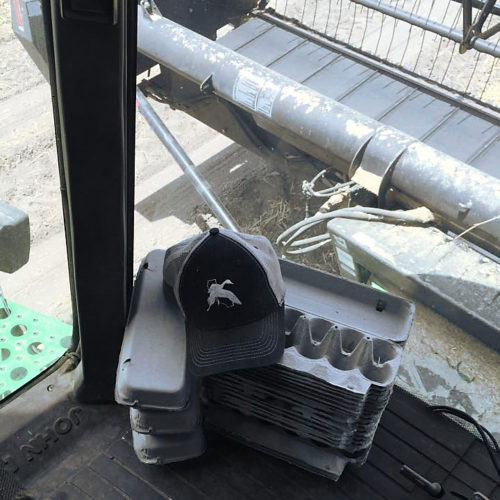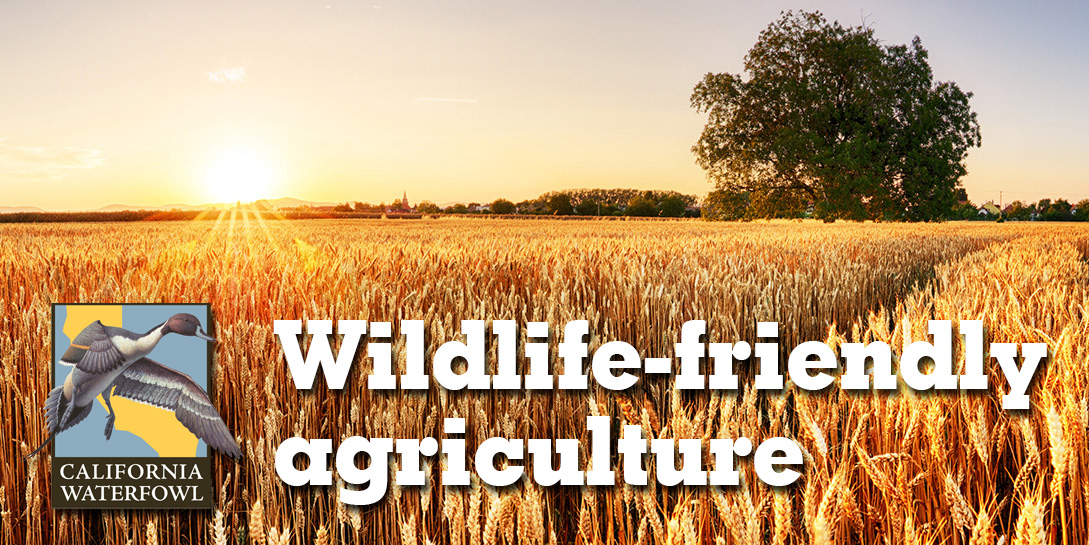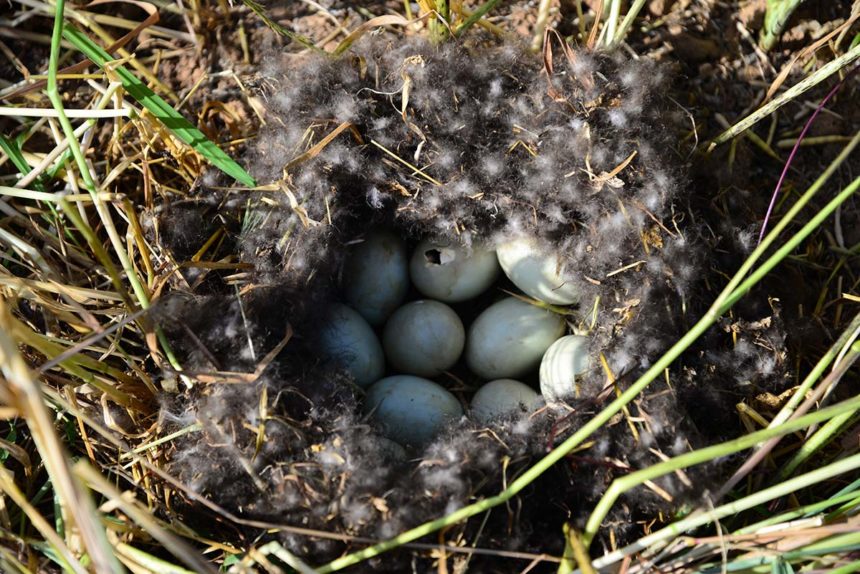There are four ways farmers can help California's wild duck population during breeding season.
ENROLL FIELDS IN EGG SALVAGE PROGRAM
Do you see ducks flying in and out of your fields during the spring? If so, they’re probably building nests.
Granting CWA biologists, staff and volunteers access to your fields during the spring before you harvest, mow or do pre-planting ground work lets us save eggs that would otherwise be destroyed by farm machinery.
If you’re willing to rescue eggs yourself as your equipment moves through the field, we will give you egg crates and instructions on how to best care for the eggs until a pick up or drop off can be arranged.
For information about how to enroll in our FREE Egg Salvage Program, email Waterfowl Biologist Jason Coslovich at jcoslovich@calwaterfowl.org.


Enroll fields in our Delayed Wheat Harvest Incentive Program
Begun in 2020, this program provides incentives to farmers who delay wheat harvest until July 1-15 to give any nests in their fields time to hatch naturally. The benefits of this program are that 1) the ducklings are raised by their mothers, which is ideal, and 2) it is not labor-intensive because the whole focus is on letting nature take its course.
Incentive payments of $30 to $40 per acre help offset risks posed by the delay, including crop degradation and fire risk.
The application period typically opens in January and closes in late February. Our biologists evaluate fields for their likelihood of producing broods, which typically hinges on the proximity to suitable water for brood-rearing.
Click here to learn more.
PROVIDE SAFE NESTING HABITAT
If you are fallowing any fields, cover crops such as vetch or oats can provide critical nesting cover for mallards and other ground-nesting birds.
Cover crops also slow erosion, improve soil, smother weeds and enhance nutrient and moisture availability. They can also increase overall farm profitability through increased yields, reduced fertilizer costs and less weed management.
In 2018, a CWA-sponsored bill created the state Nesting Bird Habitat Incentive Program to provite support for farmers who wish to fallow a portion of their land to provide waterfowl and upland game bird nesting habitat. CWA continues to seek funding for implementation of the program.

IMPLEMENT WILDLIFE-FRIENDLY HARVESTING TECHNIQUES
You can mount flushing bars on the front of tractors or self-propelled haybines. These devices create a disturbance in front of your machinery, giving nesting hens a little more time to escape. Nests will likely still be destroyed, but many hens will re-nest. For more information, click here.
You can also alter harvesting routes for hay and wheat. Instead of harvesting from the outside of a field in, which tends to concentrate birds at the center, harvesting from the inside out gives them a chance to escape to adjacent cover.
Mowing can destroy nests, eggs and adult birds because ground-nesting females that are incubating eggs are extremely reluctant to leave their nests. We recommend delaying mowing as long as possible if during the peak nesting season. If you can’t do that, you can operate equipment at a slower rate - swathers and mowers moving at 12+ mph give nesting hens very little time to react and fly clear of their nests.


